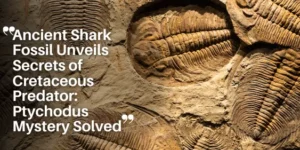Murder Hornet or Regular Wasp? Identifying the Bugs Behind the Buzz

Introduction: Hornet Hysteria
The Initial Shock
You’re strolling through your garden on a warm summer day, admiring the blooming flowers, when suddenly a large, menacing insect buzzes past your face. Its translucent wings beat rapidly, and its black and yellow striped body seems almost alien-like in appearance. Your heart races as you catch a glimpse of its sharp stinger, and you can’t help but wonder – is this the dreaded “murder hornet” that has been making headlines?
Invasive Species Fears
The sighting of such a large, intimidating insect can trigger fears of an invasive species taking hold in your local ecosystem. After all, the northern giant hornet, also known as the “murder hornet,” has been the subject of much concern since its first detection in North America in 2019. This predatory insect poses a significant threat to honeybees and other pollinators, which play a crucial role in maintaining healthy plant populations.
The Need for Proper Identification
However, before sounding the alarm, it’s essential to properly identify the insect in question. Many harmless species, such as the European hornet, are often mistaken for the northern giant hornet due to their similar appearance. Jumping to conclusions and spreading unnecessary panic can lead to misguided efforts and wasted resources. Proper identification is key to addressing genuine threats while avoiding overreaction to native or naturalized species that pose no significant risk.
The Northern Giant Hornet: Understanding the Threat
A Formidable Invader
The northern giant hornet, also known as the “murder hornet,” is a species of wasp native to parts of Asia, including India, China, Korea, and Japan. This insect is the largest known species of hornet, with some specimens reaching a staggering 5 centimeters (2 inches) in length. Their imposing size and distinctive yellow and black coloration make them an intimidating sight for any unsuspecting observer.
Predatory Prowess
While the “murder hornet” moniker is somewhat sensationalized when it comes to their threat to humans, it accurately reflects their predatory behavior towards other insects, particularly honeybees. These hornets are known to attack and decimate entire honeybee colonies, posing a severe risk to local ecosystems and agriculture.
First Sightings in North America
In 2019, the northern giant hornet made headlines when specimens were spotted in Nanaimo, British Columbia, and Washington state, marking their first confirmed sightings in North America. While their presence on the west coast raised concerns about the potential impact on local insect populations and ecosystems, experts have emphasized that their spread across Canada remains unlikely.
Monitoring and Eradication Efforts
In response to the discovery of northern giant hornets, authorities in both Canada and the United States have implemented measures to track and eliminate any nests found. Residents are encouraged to report sightings to provincial conservation authorities or relevant agencies, enabling targeted eradication efforts.
While the northern giant hornet’s presence in North America is concerning, it is crucial to maintain vigilance and support ongoing monitoring and eradication efforts to prevent their establishment and protect local ecosystems.
Distinguishing Fact from Fiction
The Importance of Proper Identification
As the buzz around the “murder hornet” continues to swirl, it’s crucial to separate fact from fiction. Misidentifying harmless insects as invasive species can lead to unnecessary panic and misdirected efforts. To avoid such confusion, we must emphasize the importance of proper identification.
Naturalized Species: The European Hornet
One insect often mistaken for the northern giant hornet is the European hornet, a species that has been naturalized in Canada since the mid-1800s. While they may resemble the feared “murder hornet,” European hornets are typically smaller, with lighter yellow coloring and distinctive keyhole-shaped markings on their black stripes.
Harmless Residents
Unlike their invasive counterparts, European hornets pose no significant threat to local ecosystems or pollinators. They are considered a naturalized part of Ontario’s environment, according to the Invasive Species Centre.
Other Mistaken Identities
Aside from the European hornet, several other native or naturalized species are often confused with the northern giant hornet, including:
- The bald-faced hornet
- The yellowjacket wasp
- The eastern cicada killer
These insects are either native or well-established in eastern Canada and pose no significant risk.
Staying Vigilant, Staying Informed
While the prospect of a northern giant hornet invasion sweeping across the country remains remote, experts emphasize the importance of continued vigilance and public awareness. By learning to distinguish between invasive species and their harmless lookalikes, we can avoid unnecessary panic and focus our efforts on genuine threats to our ecosystems.
“Fortunately, there is currently no evidence of the northern giant hornet in Ontario,” states the Invasive Species Centre. “This means that we must continue to be vigilant and work to prevent their introduction and establishment.”
Monitoring and Eradication Efforts
Tracking the Invaders
With the potential threat posed by the northern giant hornet, authorities have implemented rigorous monitoring and eradication protocols to prevent their establishment. The Washington State Department of Agriculture (WSDA) maintains a cross-border database, tracking sightings and nests since the first detection in 2019. While confirmed sightings have been sporadic, with only 45 recorded instances as of 2021, the WSDA remains vigilant in their efforts to ensure complete eradication.
Eradication Criteria
Stringent Standards
To declare the northern giant hornet eradicated, the WSDA requires three consecutive seasons without detecting a nest or specimen. Canada, on the other hand, has adopted an even stricter policy, waiting for a five-year period without sightings before declaring the species eradicated from its territory.
As these milestones draw closer, with the most recent sighting in 2021, authorities are intensifying their efforts to identify and eliminate any remaining nests or individuals.
Public Involvement
- Residents in affected areas are encouraged to report potential sightings to provincial conservation authorities or designated agencies.
- Clear guidelines and identification resources are provided to assist the public in distinguishing the northern giant hornet from other, less harmful species.
- Responsible reporting plays a crucial role in the early detection and rapid response necessary for successful eradication efforts.
Sven Spichiger, WSDA managing entomologist, emphasized the ongoing nature of the eradication work in a November 2022 release, stating, “The work to ensure they are eradicated is not over yet.”
Through coordinated monitoring, stringent eradication criteria, and public engagement, authorities aim to prevent the establishment of this invasive species and mitigate its potential impact on local ecosystems and agriculture.
Climate Change and Potential Spread
Rising Temperatures, Shifting Ranges
As the climate crisis continues to unfold, one concerning possibility is the potential for invasive species like the northern giant hornet to expand their range into new regions. With rising global temperatures, areas that were previously too cold for the hornets to survive could become hospitable habitats. According to experts, the northern giant hornet’s native range spans regions with temperate and subtropical climates, which may allow them to spread further if warming trends persist.
Current Evidence: Localized Presence
However, it’s important to note that despite the occasional sighting, there is currently no evidence of the northern giant hornet establishing a widespread presence in most regions outside its native range. According to the Invasive Species Centre, confirmed detections have been sporadic and localized, primarily concentrated in the Pacific Northwest region of North America.
Eradication Efforts and Monitoring
- Authorities in affected areas have implemented measures to track and eliminate northern giant hornet nests whenever they are discovered.
- The Washington State Department of Agriculture maintains a cross-border database, showing only 45 confirmed detections since tracking began, with the most recent sighting in 2021.
- To declare the species eradicated, three consecutive seasons must pass without detecting a nest or specimen in Washington State, while Canada prefers to wait five years.
Vigilance and Responsible Reporting
While the potential for range expansion due to climate change cannot be entirely dismissed, the current evidence suggests that the northern giant hornet has not yet established a widespread presence in most regions. However, continued vigilance and responsible reporting of potential sightings to appropriate authorities are crucial to prevent the establishment of this invasive species and mitigate its potential impact on local ecosystems and agriculture.
Staying Vigilant and Informed
Importance of Vigilance
While the risk of a widespread northern giant hornet invasion remains low, it is crucial to maintain vigilance and report any potential sightings to the appropriate authorities. According to the Invasive Species Centre, “This means that we must continue to be vigilant and work to prevent their introduction and establishment.” Staying informed about the latest developments and taking responsible action can help prevent the establishment of this invasive species.
Responsible Reporting
Proper Identification
To avoid unnecessary panic, it is essential to correctly identify the species before reporting a sighting. Misidentifications can lead to wasted resources and efforts. As noted by University of Toronto entomologist Rosalind Murray, many native or naturalized species, such as the European hornet, are often mistaken for the northern giant hornet. Familiarize yourself with the distinguishing features, such as size, coloration, and markings, to make an accurate identification.
Reporting Protocols
If you suspect you have encountered a northern giant hornet, report the sighting to the appropriate provincial or state conservation authorities. Provide detailed information, including the location, date, and any photographs or videos you may have captured. Follow the reporting protocols outlined by the authorities to ensure efficient tracking and response.
Public Awareness
Raising public awareness about the northern giant hornet and the importance of proper identification is crucial. Community outreach programs, educational materials, and social media campaigns can help disseminate accurate information and dispel myths or misconceptions. By staying informed, individuals can make responsible decisions and contribute to the collective effort to prevent the establishment of this invasive species.
Collaboration and Coordination
Effective management of invasive species requires collaboration and coordination among various stakeholders, including government agencies, researchers, beekeepers, and the general public. By working together, sharing information, and implementing best practices, we can enhance our ability to detect, monitor, and respond to potential threats posed by the northern giant hornet or other invasive species.







